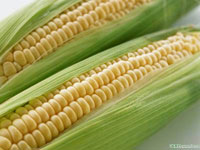100个重要问题-保护全球生物多样性
Sutherland,
W. J. et al. 2009. One hundred questions of importance to the conservation of
global biological diversity. Conservation Biology 23(3): 557-567.
2291个问题通过全球性的调研,最后选取了12个部分100个问题,基本上代表了全球保护生物学研究的重点热点。这些问题对于确定保护生物学的新研究方向和资助重点可能会有帮助。下面是这100个问题,以及本人的一些看法。
Ecosystem
Function and Services
1. Do critical
thresholds exist at which the loss of species diversity, or the loss of
particular species, disrupts ecosystem functions and services, and how can these
thresholds be predicted?(这个主要是BEF,biodiversity ecosystem
function)
2. What is the
effectiveness of different methods for the assessment of ecosystem
services?(生态系统服务价值评估~)
3. How can
biodiversity considerations be integrated into economic policies to reflect the
monetary and nonmonetary value of biodiversity, ecosystem processes, goods, and
services?(绿色GDP~?)
4. How can ecosystems
be managed to increase protection of humans and biodiversity from extreme
events?(卡特里娜飓风、Rita飓风,上海的9711台风都是发生在城市直接通过大堤亲密接触海洋的地方,没有了陆地和海洋间的滩涂湿地作为缓冲带,不明智的,上海也不是个安全的城市,想象一下6~7米海拔的大堤垮掉以后,平均海拔几米的上海会如何就知道了,至于潮间带的生物多样性,更是不要说了,潮间带没有了,生物更没了,据说最近上海的金山、奉贤在考虑围垦到-3米线,城市和大海就更亲密了~)
5. How, where, and
when has biodiversity loss affected human welfare?
6. What strategies
for distributing the material benefits derived from biodiversity most
effectively foster environmental stewardship and biodiversity
conservation?
7. How can protected area networks be designed to increase carbon
storage benefits and mitigate climate impacts, with these benefits as incentives
to support conservation actions?
8. How does soil
biodiversity contribute to the extent and persistence of ecosystem services,
including agricultural productivity?(土壤~)
Climate
Change
9. What impact will
the melting of polar ice and a reduction in permafrost have on the human use of
high-latitude ecosystems, and how will these changes in human use affect
biodiversity?
10. Which elements of
biodiversity in which locations are most vulnerable to climate change, including
extreme events?
11. How is the
resilience of ecosystems to climate change affected by human activities and
interventions?
12. What factors
determine the rates at which coastal ecosystems can respond to sea-level rise,
and which of these are amenable to management?
13. How will climate
change, together with other environmental stressors, alter the distribution and
prevalence of diseases of wild species?
14. How will human
responses to climate change (e.g., changes in agriculture, resource conflicts,
and migration) affect biodiversity?
15. How might
biodiversity policies and management practices be modified and implemented to
accommodate climate change?
16. How might
emerging carbon markets affect biodiversity through their impacts on the
protection, management, and creation of habitats?
17. What are the
potential effects of feedbacks between climate change and ecosystem dynamics
(e.g., drought, forest dieback, and coral bleaching) on the effectiveness of
policy measures to sequester carbon and protect
biodiversity?
18. How much carbon
is sequestered by different ecosystems, including their soils, and how can these
ecosystems be managed to contribute most effectively to the mitigation of
climate change?
19. How, where, and
to what extent can natural and seminatural ecosystems contribute to climate
change adaptation and mitigation?
20. How will climate
change affect the distribution and impacts of climate-dependent disturbance
regimes, such as fire?
21. How will climate
change affect global food production, and what are the resulting consequences
for ecosystems and agrobiodiversity?
22. How does
biodiversity shape social resilience to the effects of climate
change?
Technological
Change
23. How might nanotechnology have positive or negative impacts on
biodiversity conservation?(也许可以用纳米技术标记个体,那个爽~)
24. How do the type,
location, and associated mitigation measures of renewable
energy technologies affect biodiversity?
(比如风电场对迁徙鸟的影响)
25. What are the
direct and indirect impacts of genetically modified
organisms on biodiversity?
26. What are the
implications for land use and biodiversity of the new and emerging “bioeconomy”
markets (crops for pharmaceuticals, plastics, adhesives,
etc.)?
Protected
Areas
27. How effective are
different types of protected areas (e.g., strict nature reserves, hunting
reserves, and national parks) at conserving biodiversity and providing ecosystem
services? (保护区有效性评价?)
28. What is the
management cost per hectare required to manage protected areas effectively, and
how does this vary with management category, geography, and
threat?
29. What are the
human well-being costs and benefits of protected areas, how are these
distributed, and how do they vary with governance, resource tenure arrangements,
and site characteristics?
30. How does the
management of protected areas affect conservation beyond the boundaries of the
protected area, such as through the displacement of human populations, hunting,
or fishing?
Ecosystem
Management and Restoration
31. What is the
trade-off for biodiversity between balancing production of natural resources
from intensive management systems, such as plantation forestry and aquaculture,
versus harvesting those resources from more natural
ecosystems?
32. What was the
condition of ecosystems before significant human disruption, and how can this
knowledge be used to improve current and future management?
(难道要找没有人类干扰的生态系统?)
33. What, and where,
are the significant opportunities for large-scale ecosystem
restoration that benefits biodiversity and human
well-being?(比如中国的三北防护林,封山育林计划等)
34. How can ecosystem
management systems be designed to better emulate natural processes, notably
natural disturbance regimes, and to what extent does this improve conservation
effectiveness? (我所在课题组倡导:培育自然资本,提高生态系统服务价值)
35. To what extent,
and under what conditions, does the integration of marine, terrestrial, and
freshwater ecosystems within conservation plans yield better outcomes than plans
based on single realms?
36. What spatial
pattern of human settlement (e.g., clustered vs. dispersed) has the least impact
on biodiversity?(城市和农村对生物多样性的影响?)
37. What is the
contribution of areas that are intensively managed for production of commodities
(such as food, timber, or biofuels) to conservation of biodiversity at the
landscape scale? (比如水稻田对生物多样性维持的作用,国内似乎未见这个角度的)
38. How can an
understanding of factors affecting household decisions to invest in different
natural resource- based productive activities (e.g., agriculture, fishing, or
hunting) be used to predict the biodiversity impacts of household responses to
environmental change?
Terrestrial
Ecosystems
39. What are the
impacts on biodiversity and ecosystem services of biofuel production and how
will these vary by feedstock type, location, objective, and technology
applied?
40. Under what
conditions can agricultural intensification contribute to conserving overall
biodiversity by reducing pressure to convert natural
ecosystems?
41. What are the
impacts (on and off site) on agricultural returns and biodiversity of
“biodiversity-friendly” agricultural practices, such as organic, minimum
tillage, and agroenvironment schemes?
42. Under what
circumstances can afforestation, reforestation, and reduced emissions from
deforestation and degradation (REDD) benefit biodiversity conservation, reduce
emissions, and provide sustainable livelihoods?
43. How do different
forms of forest governance influence biodiversity conservation outcomes and the
implementation of REDD?
44. How are arid and
semiarid ecosystems affected by the interaction of multiple stressors such as
grazing by domestic livestock, soil erosion, and drought?
45. What are the
contributions of urban nature reserves and other
green amenity spaces, such as golf courses, to biodiversity conservation, and
how can these be
enhanced?(似乎是唯一关于城市的~城市化和生物多样性的关系应该也是热门才对啊;这一点中国和国外差异很大,国外似乎是良好生境里一块水泥地,比城市绿地更优的栖息地大量存在于城市周边,而中国的大部分城市似乎是在一块水泥地中间有些绿色斑块,城市的绿地反而成为优于城市周边的栖息地了)
Marine
Ecosystems
46. How will ocean
acidification affect marine biodiversity and ecosystem function, and what
measures could mitigate these effects?
47. What are the
ecological, social, and economic impacts resulting from the expansion of
freshwater and marine aquaculture?
48. Which management
actions are most effective for ensuring the long-term survival of coral reefs in
response to the combined impacts of climate change and other existing
stressors?
49. Which management
approaches to fisheries are most effective at mitigating the impacts of fish
extraction and fishing gear on nontarget species and their
habitats?
50. How does the
effectiveness of marine protected areas vary with biological, physical, and
social factors and with connectivity to other protected
areas?
51. What will be the
impacts of climate change on phytoplankton and oceanic productivity, and what
will be the feedbacks of these impacts on the climate?
52. How will multiple
stressors, especially fishing, pollution, sea temperature fluctuations,
acidification, and diseases, interact to affect marine
ecosystems?
53. Whichmechanisms
are most effective at conserving biodiversity in ocean areas occurring outside
the legal jurisdiction of any single country?
Freshwater
Ecosystems
54. How can
freshwater biodiversity and ecosystem service values best be incorporated in the
design of water-provisioning schemes for direct human use and food
production?
55. Which aquatic
species and communities are most vulnerable to human impacts, and how would
theirdegradation affect the provision of ecosystem services?
56. Where will the
impacts of global climate change on hydrology be most extreme, and how might
they affect freshwater species and the ability of wetlands and inland waters to
deliver ecosystem services?
57. Which
multinational governance, cross-sector cooperation arrangements, and finance
mechanisms will make freshwater ecosystem management more effective and reduce
international conflicts over water?
58. How does
investment in restoration of wetlands and riparian areas compare with
construction of dams and flood defenses in providing cost-effective improvements
in flood management and the storage and retention of water for domestic,
industrial, and agricultural use?
Species
Management
59. Under what
conditions is trade in captive or wildharvested species beneficial for wild
populations of the traded species? (东北虎养殖太多了应该考虑适当利用~)
60. What information
is required to enable responsible authorities to decide when and how to manage
nonnative species?(外来物种管理)
61. What is the
relative effectiveness of different methods for facilitating movement of a
species among disjunct patches of its habitat?
62. What is the
cost-effectiveness of different contributions to species conservation programs
such as education, captive breeding, and habitat management?
63. What are the
ecosystem impacts of efforts to conserve charismatic, flagship, or umbrella
species?(以物种带动生态系统的保护,似乎效果不佳,Nature上有大熊猫保护了,其生境却退化了~)
64. What are the
likely risks, costs, and benefits of reintroducing and translocating species as
a response to climate change?
65. What are the most
effective approaches for reversing range and population collapse in top
predators, large herbivores, and other species that exert disproportionate
effects on ecosystem structure and function?(考虑top-down,bottom-up以及trophic
cascade的影响)
66. How can we best
manage diseases that have the potential to move among wild species, domestic
species, and people?(禽流感,猪流感,SARs……)
Organizational Systems and Processes
67. How do the
characteristics of the organizations (e.g., government vs. nongovernment) and
their funding (e.g., amount and duration of funds) shape the effectiveness of
conservation interventions?
68. What factors
affect the extent towhich practitioners integrate consideration of human needs
and preferences into policy and practice?
69. What is the
cost-effectiveness of different approaches for rapidly expanding professional
conservation capacity, and how does this vary with circumstances and among
countries?
70. What is the
effectiveness of the different mechanisms used to foster the evaluation and
dissemination of conservation interventions?
71. How effective are
the different strategies devised to integrate scientific knowledge into
conservation policy and practice?
72. How effective are
the different mechanisms used to promote data sharing and collaboration among
individuals, conservationists, and conservation
organizations?
Societal
Context and Change
73. What are the
impacts on biodiversity of shifting patterns and trends in human demography,
economic activity, consumption, and technology?
74. How does the
relationship between economic growth and biodiversity vary across scales, among
different types of ecosystems, and with the type of economic
activity?
75. What are the
direct and indirect impacts of armed conflict on
biodiversity?
76. What are the
biodiversity impacts of changes in energy prices?
77. How do resource
tenure systems shape conservation outcomes in different social and ecological
contexts?
78. What are the
impacts of international trade agreements and related policy instruments on
biodiversity?
79. How do economic
subsidies affect biodiversity within the recipient country and
elsewhere?
80. How does
corruption influence the effectiveness of conservation, and what are the most
effective ways of preventing negative consequences?
81. What are the
conservation impacts of improved access to education, employment, and
reproductive choice?
82. What is the
relationship between individuals learning about environmental problems and their
conservation attitudes, knowledge, beliefs, and behaviors?
83. What are the
impacts of increasing human dissociation from nature on the conservation of
biodiversity?
84. What are the
effects of changes in human patterns of food consumption on biodiversity (e.g.,
shift from bushmeat to domestic meat and from fish to plantbased protein), and
how are such human patterns of food consumption shaped by education programs,
financial incentives, and other policy instruments?
85. What factors
shape human (in)tolerance of the presence and activities ofwild animals,
especially where those animals induce human–wildlife
conflict?
Impacts of
Conservation Interventions
86. What have been
the impacts on biodiversity of the Convention on Biological Diversity 2010
targets, and what objectives, mechanism, time frame, and means of measurement
would be most effective for future targets?
87. How do different
values (e.g., use vs. preservation) and the framing of these values (e.g.,
ecosystem services vs. species) motivate policy makers to assign public
resources to conservation programs and policies?
88. What factors
shape individual and state compliance with local, national, and international
conservation regimes?
89. What are the
consequences of investment in improving knowledge (e.g., status, nature of
threat, and effectiveness of interventions) versus expenditure on conservation
action, and how does this differ among conservation issues?
90. What are the
impacts on biodiversity and human well-being of differing approaches to
devolving the responsibility for natural resource
management?
91. What are the
impacts of different conservation incentive programs on biodiversity and human
wellbeing?
92. How does public
involvement, especially of marginalized groups, in conservation decision making
shape the effectiveness of conservation interventions?
93. What are the
impacts of free, prior, and informed consent policies on the emergence,
evolution, and performance of conservation interventions?
94. How does
providing information to resource users affect individual behavior. and support
for collective restrictions, and how does the effect vary with different means
of providing the information?
95. What are the
conservation impacts of corporate social responsibility regimes that are
biodiversityoriented?
96. What are the
social impacts of conservation interventions, and how and why do these impacts
vary among social groups (e.g., elites, poor, women, and
indigenous)?
97. What factors
shape the likelihood and extent of formal recognition of customary rights and
traditional institutions as the basis for conservation policy and practices, and
what are the impacts of this formal recognition on conservation
outcomes?
98. What are the most
cost-effectivemeans of encouraging broad, long-lasting, and active societal
support and action for conservation in different contexts and among different
actors?
99. What has been the
effect of environmental impact assessments on biodiversity
conservation?
100. What mechanisms
best promote the use of local ideas and knowledge in conservation programs in
ways that enhance biodiversity outcomes?
相关阅读:
- 调查证实全球变暖导致南极冰层加速消融 (laurie_dly, 2008-1-24)
- 潘世教:世界需重视全球气候变暖 采取有效应对措施 (laurie_dly, 2008-2-19)
- 生物多样性受损 人类难寻治疗癌症等疾病良方 (miracle, 2008-4-25)
- 全球生物产业步入寒冬 企业难觅资金 (jiashan0430, 2008-12-03)
- 长期不同施肥下太湖地区黄泥土蚯蚓的多样性、蛋白质含量与氨基酸组成的变化 (L120623, 2008-12-21)
- 《Nature》本月最受关注的十篇论文 (bprc, 2008-12-22)
- 《自然》:全球变暖造成季节变化提前 (jiashan0430, 2009-1-26)
- 美专家称全球变暖引起的诸多后果"难以遏制" (jiashan0430, 2009-1-29)
- 全球气候变暖可能导致85%亚马孙热带雨林毁灭 (jiashan0430, 2009-3-14)
- 美国食品检验专家:加强食品安全合作已成必然 (木偶人6, 2009-4-14)
-
 引用
删除
thereyoube / 2009-05-20 16:46:37
引用
删除
thereyoube / 2009-05-20 16:46:37
- 看了此文确实很不错!
标题搜索
日历
|
|||||||||
| 日 | 一 | 二 | 三 | 四 | 五 | 六 | |||
| 1 | 2 | 3 | 4 | 5 | 6 | ||||
| 7 | 8 | 9 | 10 | 11 | 12 | 13 | |||
| 14 | 15 | 16 | 17 | 18 | 19 | 20 | |||
| 21 | 22 | 23 | 24 | 25 | 26 | 27 | |||
| 28 | 29 | 30 | |||||||
我的存档
数据统计
- 访问量: 18903
- 日志数: 124
- 文件数: 6
- 建立时间: 2009-04-01
- 更新时间: 2012-08-22










